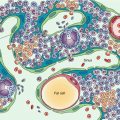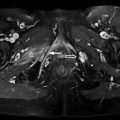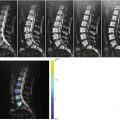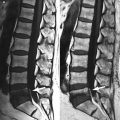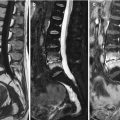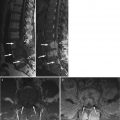© Springer-Verlag Italia 2015
Lia Angela Moulopoulos and Vassilis KoutoulidisBone Marrow MRI10.1007/978-88-470-5316-8_1010. Bone Marrow MRI: A Quick Guide
(1)
1st Department of Radiology, University of Athens School of Medicine, Athens, Greece
Lia Angela MoulopoulosProfessor of Radiology and Chair (Corresponding author)
Email: lmoulop@med.uoa.gr
10.1 Protocol
MRI of the bone marrow can be limited to the central skeleton. It should include the thoracic and lumbosacral spine and if possible the pelvis. Remember that, in an adult, it is unlikely to find a malignant bone marrow lesion in the peripheral skeleton without central lesions. T2 weighting should be performed with STIR or fat-suppressed sequences. Always obtain chemical-shift images; they are invaluable for determining the presence of red marrow and differentiating it from malignant lesions. Contrast-enhanced T1-weighted images without fat suppression allow for quantitative assessment of enhancement. Contrast-enhanced T1-weighted images with fat suppression increase lesion conspicuity. Perfusion parameters derived from dynamic contrast-enhanced images can be useful in specific clinical situations, although their use in daily practice of nonspecialized centers is limited. Diffusion-weighted images are relatively easy to perform and may be evaluated qualitatively or quantitatively (do not forget to include b-values higher than 500 s/mm2). They may provide valuable information related to lesion characterization, treatment response, and differentiation between benign and malignant vertebral fractures.
10.2 Focal Bone Marrow Lesions
The assignment of a bone marrow pattern is always made with careful review of T1-weighted images. Pattern assignment not only aids diagnosis by providing a systematic approach to image analysis but can also have prognostic implications (e.g., in multiple myeloma where a diffuse pattern of involvement has been associated with advanced disease features and poor prognosis). Focal areas of abnormal signal may be hyperintense or hypointense. A hyperintense focal lesion is almost always benign. If such a lesion retains some high signal on fat-suppressed T2-weighted images, then it is almost certainly a hemangioma (also look for low-signal reinforced trabeculae); otherwise, it is focal fatty marrow. A hyperintense focal lesion which is located along a vertebral endplate is likely to be a Modic II degenerative change; look for degeneration of the adjacent disc and similar changes of the other endplate at the same level.
Stay updated, free articles. Join our Telegram channel

Full access? Get Clinical Tree


